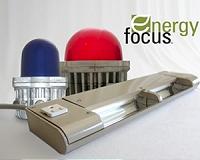 |
Beijing, China (SPX) Mar 24, 2011 Solar greenhouses have played a vital role in China's agricultural scene for years. New innovations in greenhouse design are allowing growers to produce more varieties of vegetables, even during long winter months. In a recently published report Chinese scientists called solar greenhouses "the most important type of infrastructures for growing horticultural crops in China." The team of researchers from the College of Agronomy and Biotechnology at China Agricultural University presented an extensive report on single-slope solar greenhouses in a recent issue of HortTechnology. Based on 20 years of systematic studies, the report noted: "Increased proliferation of efficient solar greenhouses in China may contribute to solving worldwide problems such as the energy crisis and global climate change." Single-slope solar greenhouses are built facing south using support and insulation walls on the north, east, and west sides. A short roof is installed on top of the north wall. The south side is supported by metal or bamboo frames (or a mixture of both materials), and is covered with plastic film and an insulating blanket. These energy-efficient greenhouses use solar energy as the only source of light and heat for winter crop production in the region between latitudes 32N and 43N for production of warm season crops such as tomato and cucumber. As in other parts of the world, the feasibility of using solar greenhouses in China largely depends on the relative duration of sunshine in the winter and temperatures at the greenhouse site. Solar greenhouses are widely used in the regions north of Huai River and the Beijing area, where greenhouses usage has greatly reduced energy demand and carbon dioxide emissions. The success of China's solar greenhouse operations has contributed to the structures' adoption by countries such as Japan, Korea, and Russia. The researchers noted that while solar greenhouses have many advantages-energy savings, reduced pollution, and improved economic development-the structures also have distinct disadvantages due to their heavy reliance on the sun and weather conditions. Especially during winter, less solar radiation and low temperatures can have a significant negative impact on warm-season vegetable productivity of the greenhouses, and addressing these issues can be challenging. "Innovation and optimization of the greenhouse structure needs to continue. More work needs to be done on gutter-connected, double-arched, and semi-underground greenhouses. New wall insulation materials need to be developed to reduce the thickness of the wall while improving its insulation efficiency and expanding space utilization, said Zhen-Xian Zhang, lead author of the study. The study also recommended that breeding new varieties of horticultural crops that can adapt to low light and winter temperatures in solar greenhouses will provide another strategy to ensure sustainable development of the greenhouse industry. "The solar greenhouse has a very bright future, especially given the amount of concern over the global energy crisis and climate change. Additionally, significant energy savings can be realized from switching to solar greenhouses. We hope this technology can be applied to regions of similar climate to help reduce energy consumption and CO2 emissions", Zhang said.
Share This Article With Planet Earth
Related Links American Society for Horticultural Science Powering The World in the 21st Century at Energy-Daily.com
 Energy Focus Receives Order To Relight Two Additional US Navy Ships
Energy Focus Receives Order To Relight Two Additional US Navy ShipsSolon OH (SPX) Mar 22, 2011 Energy Focus has announced that it recently received a $446,000 order to supply its recently qualified LED lighting fixtures to retrofit two US Navy destroyers. The products ordered include Energy Focus LED Berth lights using its proprietary IntelliTube technology to replace fluorescent T-5 fixtures at half the power as well as its LED globe products using state of the art white, yellow, r ... read more |
|
| The content herein, unless otherwise known to be public domain, are Copyright 1995-2010 - SpaceDaily. AFP and UPI Wire Stories are copyright Agence France-Presse and United Press International. ESA Portal Reports are copyright European Space Agency. All NASA sourced material is public domain. Additional copyrights may apply in whole or part to other bona fide parties. Advertising does not imply endorsement,agreement or approval of any opinions, statements or information provided by SpaceDaily on any Web page published or hosted by SpaceDaily. Privacy Statement |